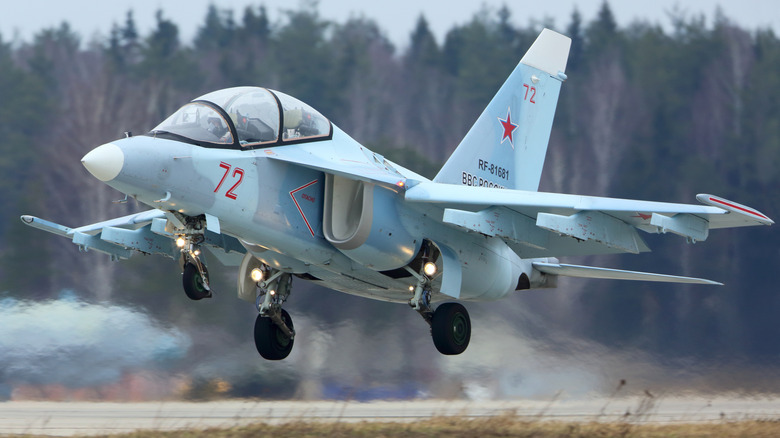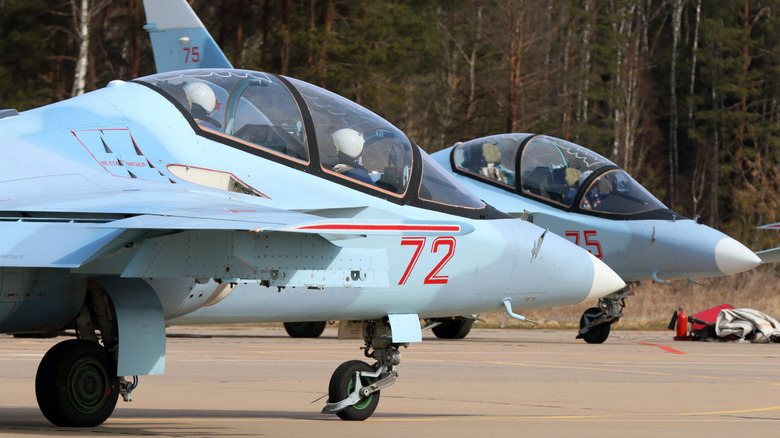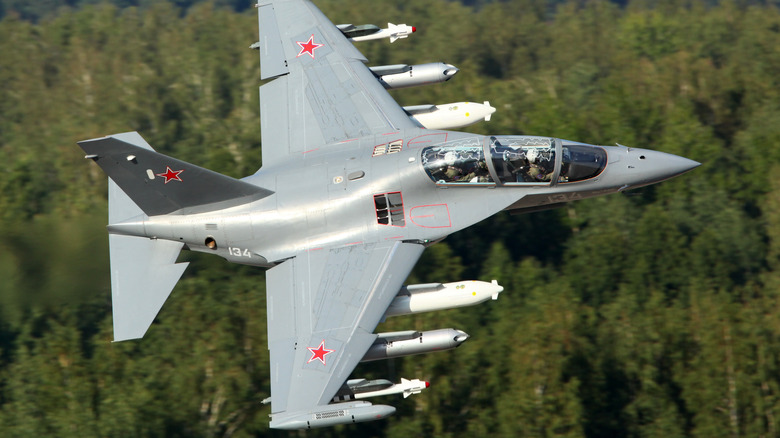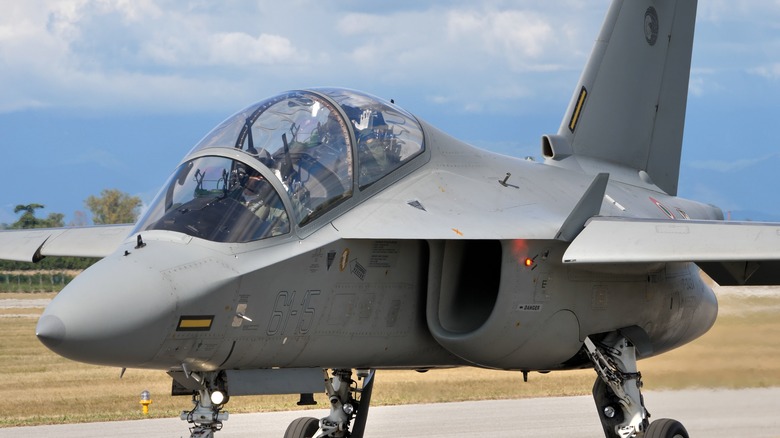All About The Yak-130 Combat Training Jet
The collapse of the Soviet Union in 1991 had many ramifications, not just on the societal and economic fronts, but also militarily. Many advanced military projects — despite having been funded and got to various stages of completion — never saw the light of day post-collapse. Some of those include the special laser tank, or the ambitious Buran shuttle project. But one project made it through this turbulent time to become one of the most capable advanced jet trainers and light attack aircraft today: the Yakovlev Yak-130 (NATO codename "Mitten").
Compared to the Aero L-29 Delfín and the L-39 Albatros that the Soviet Union relied on for advanced fighter pilot training up until that point, the Yak-130 doesn't just look more modern with its sharper profile similar to stealth fighters, it also offers much better flying performance, too. The aircraft could closely mimic the flying characteristics of fourth-generation-plus fighters currently in service with the country, such as the Su-34 Fullback, or even fifth-generation like the Su-57 Felon. Additionally, it could be pressed into service at a moment's notice as a light attack and reconnaissance aircraft.
With units in active service not just in Russia, but also purchased by militaries in countries like Vietnam, Iran, and Laos, the Yak-130 has become one of the most prolific jet trainers in the world's weapon export market. So, what makes it such a compelling choice?
It's can handle 21st century air combat training
The Yak-130 is a twin-seat jet trainer, with the student pilot sitting in the front cockpit and the instructor behind. Both seats feature full glass displays, and the digital fly-by-wire (FBW) system allows either person to take control of the aircraft at any time.
The FBW is the bread and butter of the Yak-130. Instead of mechanical systems translating the pilot's inputs to the flight controls, everything is done electronically by the flight computer. Besides making the aircraft easier to fly, the FBW can be reprogrammed to match the expected handling characteristics of the specific fighter jet the student is training to learn. So, no matter if the pilot will pilot the agile Su-27 Flanker or the heavier, more sluggish Su-25 Frogfoot, the Yak-130 can be adjusted to provide a fairly realistic training experience.
The Yak-130 is powered by a pair of Ivchenko-Progress AI-222-25 turbofan engines, which, like the flight controls, are also digital. From setting thrust levels to diagnostics and monitoring, everything is performed by a Full Authority Digital Engine Control (FADEC) system.
In the air, the pilot can select from various simulated training programs, such as air-to-air or air-to-ground combat scenarios. All mission details and relevant telemetry data, like airspeed and altitude, are displayed on the Head-Up Display (HUD). The Yak-130 also supports a helmet-mounted target designation system.
It features combat capability on demand
Like most advanced trainer jets, the Yak-130 is not limited to being a "student plane." It can transition from live-fire training exercises to performing limited combat operations. For air-to-ground missions, the Yak-130 can be outfitted with a variety of unguided bombs weighing up to 500 kg, such as the FAB-M62 (which can be converted into a guided munition by adding the Universal Interspecific Gliding Munition (UMPB) guidance kit), or certain guided bombs like the KAB-500Kr. Rocket pods can also be mounted on one of the Yak-130's nine hardpoints to launch air-to-surface rockets like the S-8, S-13, or S-25. Additionally, an SNPU-130 gun pod can be mounted on the aircraft's centerline, which houses a 23-mm Gryazev-Shipunov GSh-23L autocannon with approximately 120 rounds of ammunition.
For air-to-air missions, the Yak-130 is compatible with the R-73 missile. As mentioned earlier, together with the helmet-mounted target designation system, pilots have greater flexibility in locking and engaging targets using the missile's high-off boresight capability (meaning the missile can lock and engage a target even if it's not directly in front of the aircraft).
The Yak-130 is equipped with chaff-and-flare dispensers to protect itself from threats. It can also carry targeting pods and fuel tanks to increase range for air reconnaissance tasks, as well as electronic countermeasure pods to enhance its survivability in contested areas. Quite an impressive loadout for a trainer aircraft!
Why Does It Look Like the M-346 Master?
If you're an aviation enthusiast, you may notice the striking similarity between the Yak-130 and the Italian Aermacchi M-346 Master at first glance. Well, there's a good reason for that — they're essentially the same thing!
During the development phase of the Yak-130, the collapse of the Soviet Union left Yakovlev in a bit of a pickle finance-wise. To keep the program running, they had to partner with Alenia Aermacchi, who stepped in as both the financier and aided with some technical aspects relating to the aircraft. The project progressed throughout most of the 1990s, but the partnership between the two companies ultimately fell apart in 1999.
Was it really a disagreement over the vision, or were political factors at play? In any case, the end result was that there are now two different companies holding onto bits and pieces of a single, highly-capable aircraft... and neither's willing to let it go. Aermacchi paid Yakovlev $77 million for the remaining technical documents on the aircraft. Yakovlev went on to produce the Yak-130, retaining the rights (as per the original agreement with Aermacchi) to sell it to Russia-friendly states like India and Algeria. Meanwhile, Aermacchi built its M-346 Master derivative and sold it to NATO countries (such as Greece, Italy, and Poland) and Western-friendly nations (Israel and Singapore).



